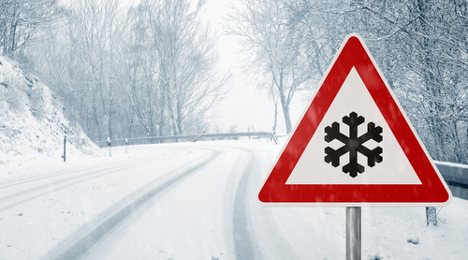Winter Weather’s Trickle-Down Impact on Used Prices

One of the coldest February in years that brought record-breaking snowfall and temperatures with it had a direct impact on used-car prices. And with this slowdown in price growth and disruption to dealers and buyers, pent-up demand is expected to push prices higher than expected this month.
That’s according to data shared in the latest Guidelines report from NADA Used Car Guide.
The extreme winter weather seen across much of the country put a damper on used-price growth in the lanes last month.
Wholesale prices for vehicles up to 8 years in age grew by 0.8 percent levels from January. This was slightly lower than NADA’s forecasted 1-percent spike.
And looking at the trend from a historical standpoint, February’s drop was almost a full percentage point lower than roughly 1.7-percent average decline for the month from 1996 to 2014, according to NADA data.
Jonathan Banks of NADA Used Car Guide, said: "Since the inclement weather possibly prevented dealers from attending auctions ― and customers from commuting to dealer lots ― demand wasn't as strong as it usually is in February."
Banks went on to explain: "As a result, prices were almost a full percentage point lower than the historical average we've tracked since 1996 … consumers should know the savings trend won't last for long, as pent-up demand and tax refund checks will fuel spring season purchases."
According to the report, mainstream segment price growth was fairly consistent, with price increases ranging from 0.5 percent to 1.4 percent.
Interestingly, rates for half of the eight non-luxury segments tracked by NADA — compact cars, compact utilities, large pickups and midsize utilities — all saw an increase of 0.7 percent last month. The largest monthly price spike in February was seen in the midsize car segment, which saw prices rise by 1.4 percent
Year-over-year, large pickups were up 7.6 percent from February 2014, coming off a strong 2014 for price retention.
Two more strong performers, the report noted, were midsize utilities and midsize vans, whose prices were 4.2 percent and 2.6 percent higher than the same period last year, respectively.
And interestingly, low gas rates at the pump and a 6-percent increase in late-model supply, according to the report, didn’t impact subcompact car rates negatively. In fact, this segment saw prices rise by 1 percent last month when compared to January.
On the luxury side of the market, the story was a bit different.
“As they’re historically prone to do, prices for luxury segments moved in the opposite direction of their mainstream counterparts in February, with prices for luxury cars and trucks alike declining across the board,” said Banks.
Luxury compact car prices saw the biggest drop with a 1-percent decline, while the remaining luxury segments fell by an average of 0.5 percent.
For more insight on how the frigid February impacted the auction price environment, see the video above from NADA Used Car Guide.
As for what’s in store for March, NADA UCG expects used prices to rise by 1 percent this month, before starting on a downward trajectory in April.
“Given February’s weather-afflicted performance, however, it’s now likely seasonal demand will be stronger over the period than anticipated last month,” Banks said, hinting we might see prices rise a bit over current expectations.
Last year, similar winter weather hindered used-vehicle purchases for both dealers and consumers, which led to a 4-percent increase in March, which was the highest price spike ever recorded by NADA for the month.
“While we don’t foresee a similar outcome this year, it wouldn’t be surprising to see appreciation in March exceed the 1 percent high-end of our forecast,” said Banks. “As for April, we still expect to see a drop in prices over the month. The drop will be at a less substantial rate of 0.5 percent to 1 percent, rather than the 2 percent or higher rate forecasted in February.”

 View The Latest Edition
View The Latest Edition

